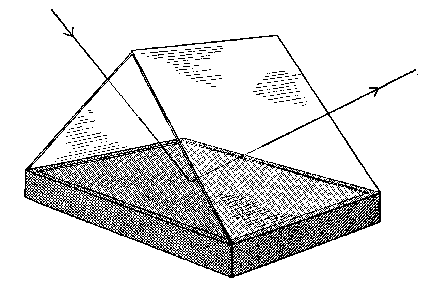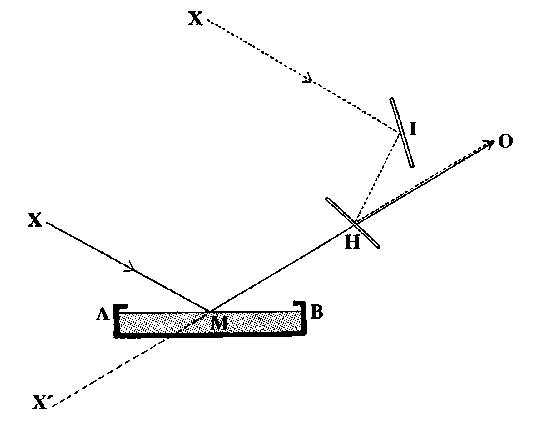Astronavigation on Land
These problems are overcome in different ways but one of the two easiest is the use of the bubble sextant - a sextant so made that a spirit level is incorporated in the optics thus allowing the sextant to always be perfectly horizontal to the earth:
The second method is to shoot the reflection of the star in some liquid reflecting medium. The liquid, being perfectly horizontal, will give the same horizontal effect as the bubble sextant.
 The Artificial Horizon usually consists of a shallow rectangular trough filled with mercury, and the heavenly body is observed by reflection in the horizontal mirror that the surface of the mercury forms. To prevent dust from settling on the surface of the mercury and to avoid the disturbing effects of wind, the trough is protected by a roof of plate glass, shaped as indicated in the figure above.
 In the figure above X is a heavenly body, one ray from which is reflected at I, the index glass of the sextant, and H, the horizon glass, and the other at M on the surface of the mercury. XI and XM are parallel, and after reflection their final path is HO. An observer at O therefore sees an image of X in the direction OX', and he measures the angle XMX'. Since, by the optical law of reflection, the angle XMA is equal to the angle OMB, the angle XMA is equal to the angle X'MA. The angle measured in the artificial horizon, when corrected for the instrumental errors of the sextant, is therefore twice the actual altitude of the heavenly body, and there is no dip because there is no height of eye. Once the observed angles are obtained one proceeds precisely as before - remembering that a dip correction is not needed. If one is using an artificial horizon with glass plates some errors can occur due to refraction in the glass plates. These can be compensated for and corrected by shooting the star and then turning the horizon around and doing it again. Succesive shots will give a series of differences and the average of these can be used to compensate. In practice these errors tend to be very small and can usually be ignored. |

